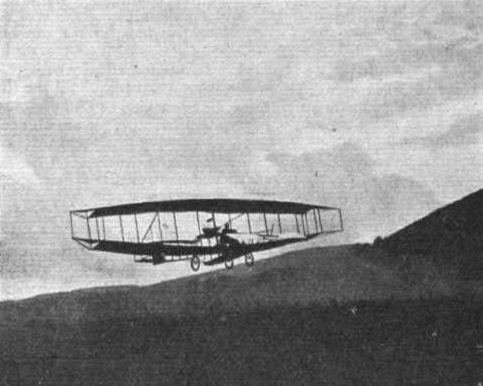
Описание
Страна: США
Год: 1908
Единственный экземпляр
Варианты
- Aerial Experimental Association - June Bug / Aerodrome #3 - 1908 - США
- Aerial Experimental Association - Red Wing / White Wing / Aerodrome #1 / #2 - 1908 - США
- Aerial Experimental Association - Silver Dart / Aerodrome #4 - 1909 - США
- Canadian Aerodrome - Baddeck No.1 / No.2 - 1909 - Канада
- P.Bowers Curtiss Aircraft 1907-1947 (Putnam)
- H.King Aeromarine Origins (Putnam)
- A.Andrews. The Flying Machine: Its Evolution through the Ages (Putnam)
- Журнал Flight
-
Журнал - Flight за 1909 г.
Fig. 25. - "June Bug" Aeroplane. Hammondsport, N.Y., Aerial Experiment Association.
-
A.Andrews - The Flying Maschine: Its Evolution through the Ages /Putnam/
June Bug, designed by Glenn Curtiss for the AEA series, and piloted by Curtiss in this photograph, was flying within a month of the crash of its predecessor and eventually achieved a 2-mile flight on 29 August 1908. The characteristic bowed effect of the mainplanes is visible. June Bug had a biplane tail unit and four triangular wing-tip ailerons. The Wrights promptly accused Curtiss of infringing their wing-warping patents with his ailerons, and the bitter legal wrangle went on for years.
-
Jane's All The World Aircraft 1913 /Jane's/
JUNE BUG (1908-09). Famous machine of its era. Built by the Aeronautical Society of America (see Cygnet II). Second machine to fly in the U.S.A. Did 2000 miles before being broken up.
-
G.Loening - Takeoff into Greatness /Putnam/
The June Bug in flight. Note ailerons at the wing tips for lateral control; not very effective.
-
P.Bowers - Curtiss Aircraft 1907-1947 /Putnam/
The AEA's third aircraft, the June Bug designed by Glenn Curtiss, won the Scientific American trophy for the first officially recorded flight of over a kilometre in the USA, accomplished by Curtiss on 4 July 1908.
-
G.Loening - Takeoff into Greatness /Putnam/
The June Bug on a flight for the Scientific American Trophy, July 4, 1908. Standing left to right: A. M. Herring, "Casey" Baldwin, Glenn Curtiss, Dr. C. M. Manly, Stanley Beach, J. A. D. McCurdy.
-
P.Bowers - Curtiss Aircraft 1907-1947 /Putnam/
A rare photograph of Glenn Curtiss' Loon (the June Bug on floats), which failed to become airborne during tests in 1908.
P.Bowers Curtiss Aircraft 1907-1947 (Putnam)
Aerodrome No.3, June Bug The June Bug, a further refinement of White Wing, was sponsored by Curtiss and was eminently successful with the same engine. First flown on 21 June, it made numerous flights, including a straightaway run of 1,140 yards (1,042 m) on the seventh flight. On 4 July, Curtiss made a pre-arranged flight to win the first task, or 'leg', of the Scientific American Trophy, which called for a straightaway flight of one kilometre (3,281 ft). After a couple of false starts, he won this with ease by flying over a mile (1.6 km) at a speed of 39 mph (62.76 km/h).
Span 42 ft 6 in (12,95 m); wing area 370 sq ft (34.37 sq m); gross weight 615 lb (279 kg).
Loon - In November 1908, the June Bug was put on twin wood-frame pontoons covered with cloth and was renamed Loon. Attempts to fly from the water were unsuccessful due to the high hydrodynamic drag of the pontoons.
Описание:







